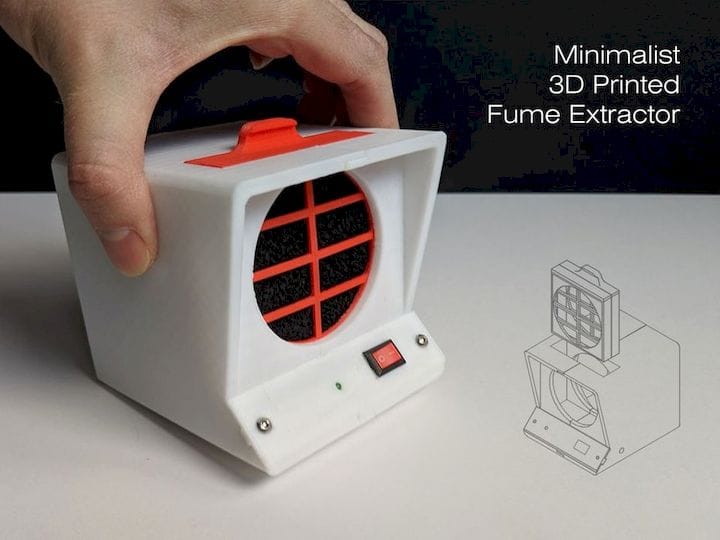![A 3D printed fume extractor [Source: Instructables]](https://fabbaloo.com/wp-content/uploads/2020/05/image-asset_img_5eb09af0695df.jpg)
This week’s selection is the “Minimalist 3D Printed Fume Extractor” by Instructables contributor rdmmkr.
This project is to build a functional fume extractor, suitable for capturing smoke from soldering stations.
While there are several 3D printed parts within this project, there are quite a number of other components that are not 3D printed. These include items such as an electric motor, power supply, metal grate, etc. These must be obtained from other sources.
The 3D printed components are designed to be printed without supports, although that implies some assembly is required. The designer used PLA material for this print, but I suspect several other materials could easily be used. However, there are no high-temperature risks, so PLA is entirely appropriate.
The design is interesting in that it implements a cartridge system for the activated carbon filter. The dimensions of this cartridge are such that many common activated carbon filter options could easily be accommodated.
![The filter cartridge approach used on a 3D printed fume extractor [Source: Instructables]](https://fabbaloo.com/wp-content/uploads/2020/05/image-asset_img_5eb09af0c3d47.jpg)
Some electrical wiring is required to complete this project, but it is straightforward and allows for a switch to control the fan power and an LED to indicate the power state.
Because this filter system is specifically designed to capture soldering station smoke, I would not recommend it for use as a 3D printer emissions capture system. This is because the typical emissions from an open-air desktop 3D printer are composed of very small nanoparticles and a potentially large number of volatile organic compounds (VOCs).
The filter used in this project is entirely inappropriate to capture the nanoparticles; they would pass right through. For nanoparticle capture you would need to use a rather fancy HEPA filter beyond the most common specifications. However, the activated carbon filter in this project might catch some of the VOCs emitted by the 3D printer.
The other challenge with using this device for 3D printer emission capture is that it would require some ducting to channel the emissions from their source, the hot end, to the filtration device. So, it’s generally not a good idea for 3D printer capture.
However, if you have a soldering station, this might be just the thing you need.
Via Instructables and Thingiverse











This week’s selection is a 3D printed Coronavirus!